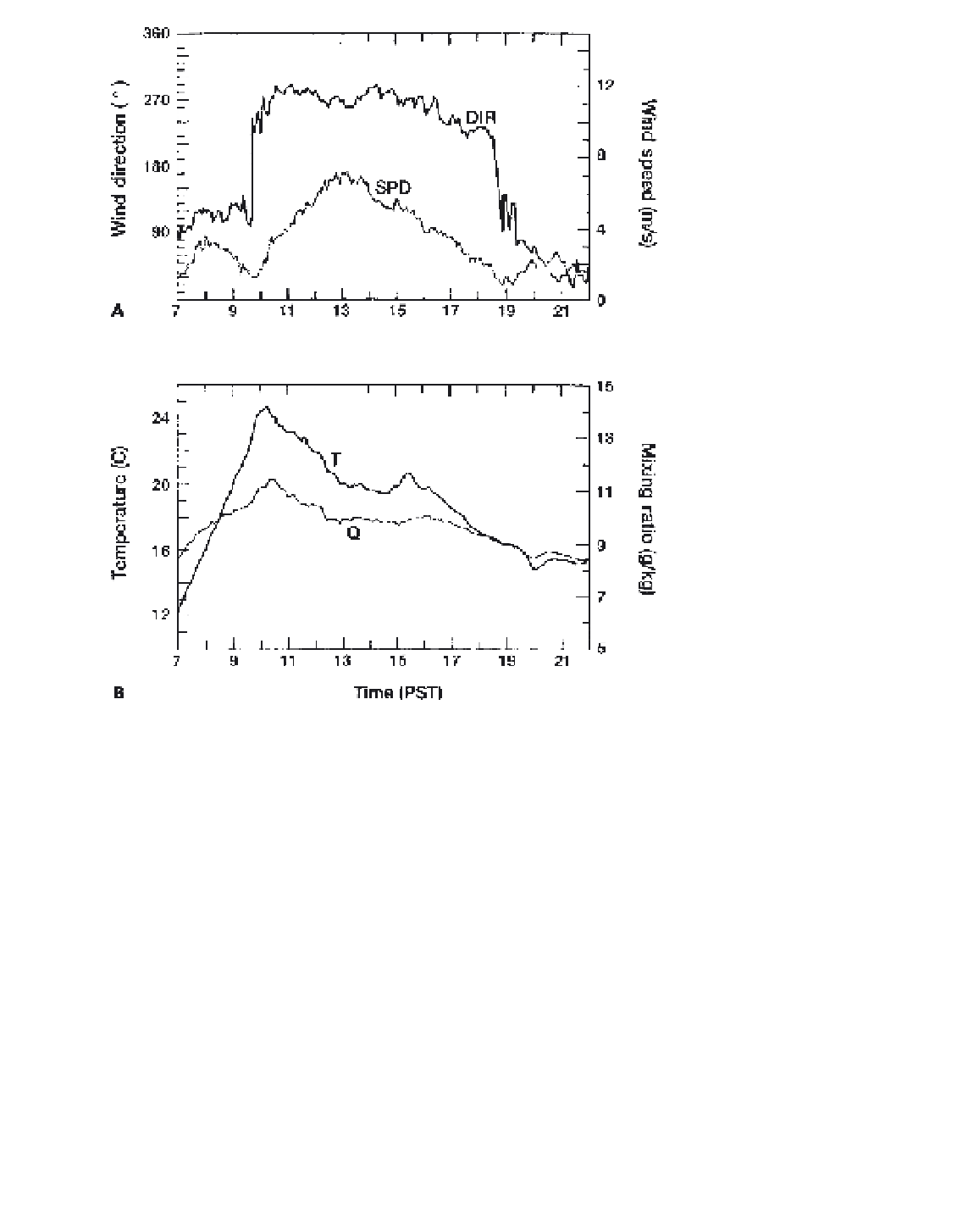Geoscience Reference
In-Depth Information
Figure 6.12
The effects of a westerly
sea breeze on the California coast on
22 September 1987 on temperature
and humidity. (A) Wind direction (DIR)
and speed (SPD). (B) Air temperature
(T) and humidity mixing ratio (Q) on a 27-
m mast near Castroville, Monterey Bay,
California. The gradient flow observed in
the morning and evening was easterly.
Source
: Banta (1995, p. 3621, Fig. 8), by
permission of the American Meteorological
Society.
northern hemisphere) so that eventually it may blow
more or less parallel to the shore. Analogous 'lake
breeze' systems develop adjacent to large inland water
bodies such as the Great Lakes and even the Great Salt
Lake in Utah.
Small-scale circulations may be generated by local
differences in albedo and thermal conductivity. Salt flats
(playas) in the western deserts of the United States and
in Australia, for example, cause an off-playa breeze by
day and an on-playa flow at night due to differential
heating. The salt flat has a high albedo, and the moist
substrate results in a high thermal conductivity relative
to the surrounding sandy terrain. The flows are about
100 m deep at night and up to 250 m by day.
and buoyant (see Chapter 5B), whereas stable air returns
to its original level in the lee of a barrier as the grav-
itational effect counteracts the initial displacement. This
descent often forms the first of a series of
lee waves
(or
standing waves
) downwind, as shown in Figure 6.13.
The wave form remains more or less stationary relative
to the barrier, with the air moving quite rapidly through
it. Below the crest of the waves, there may be circular
air motion in a vertical plane, which is termed a
rotor
.
The formation of such features is of vital interest to
pilots. The presence of lee waves is often marked by
the development of lenticular clouds (see Plate 7), and
on occasion a rotor causes reversal of the surface wind
direction in the lee of high mountains (Plate 13).
Winds on mountain summits are usually strong, at
least in middle and higher latitudes. Average speeds on
summits in the Colorado Rocky Mountains in winter
months are around 12 to 15 m s
-1
, for example, and
on Mount Washington, New Hampshire, an extreme
value of 103 m s
-1
has been recorded. Peak speeds in
3 Winds due to topographic barriers
Mountain ranges strongly influence airflow crossing
them. The displacement of air upward over the obstacle
may trigger instability if the air is conditionally unstable

